Institutional Distinctiveness
CMS has been one of the oldest institutions that pioneered the higher education system in India. We have been imparting quality education since 1817, long before universities were officially established. We functioned as an autonomous institution then, before we affiliated ourselves with prestigious universities like Madras University, Kerala University and Mahatma Gandhi University. In 2016, the college officially became autonomous again for its academic merit. The eminent leadership of the missionaries nurtured the college into a rich resource of world-class facilities like the printing press, well-equipped laboratories, a rich library, facilitated classrooms and an exquisite campus.
Aside from academics, we value advancement in the arts, cultural activities, and sports with no discrimination. One of the best aspects of our college is that it places equal emphasis on all areas to develop the overall talents and personalities of the students, conserving the heritage and adapting to the requirements of the contemporary times .
The college proudly holds and reflects its ceremonious special heritage status in its absolute sense. The embrace of heritage, in its various forms, dates back to the time of our first principal, Rev. Benjamin Bailey. He paved the way for the progressive development of a quality education system with a diligent curriculum that had no match at that time in India. He also set up the first printing press in Kerala at the college in 1820. He was the life behind the modernization of Malayalam script, which he printed on his own printing machine.
The innovation was further used by the college to publish a college magazine, “Vidya Samgraham” in 1864, for the first time in the history of South India. The magazine still runs its publication successfully under the same name. Following the finest tradition offered by a higher education institution, the college also inaugurated an era of academic publication in Kerala. The literary legacy of the college began with the publication of some meritorious contributions like Benjamin Bailey’s English-Malayalam dictionary, Joseph Peet’s Grammar Book and Rev. Richard Collin’s monolingual dictionary. These contributions remain undebatable in the transformation of a rural village to a literate one, still owning the title of Aksharanagari or the city of letters.
The college’s social and cultural heritage was so instilled with a revolutionary spirit that it became a huge influence in reforming the feudal, caste-ridden society of 19th century Kerala. Students of different religious and ethnic origins were welcomed without discrimination. Women were given the opportunity to learn and flourish at a time when no women were entertained in the academic scene. The college had its own ways of breaking the stereotypes, taboos and social stigmas that prevailed in society.
The architectural heritage of the college is another sight of wonderment. History rests in every building on the campus. The chapel and classrooms can tell tales of great legacy as they stand monumental to the gothic tradition of architecture. The construction was designed in a way to suit the climatic conditions and landscape of Kerala.
CMS is rich in owning exquisite flora and fauna that can barely find a comparison. The campus is home to diverse plants and multiple animal species. The campus maintains the natural heritage in its glory. We are the recipients of the Green Champion Award and many other prestigious honours. The institution is well-known for promoting social responsibility and sustainable development.
The CMS community offers a legacy of great magnitude of excellence and honour with eminent figures of both past and present like K. R. Narayanan, E. C. George Sudarshan, Justice K. T. Thomas, KPS Menon and Kavalam Narayana Panicker, to name a few. The alumni association of CMS contributes largely through mentorship programmes, scholarships, recruitment and networking.
According to the new National Education Policy, higher education centres should diversify their activities rather than confining themselves to the concept of offering arts and science courses. The Hues of Time project intends to promote leisure and study of art in its original as well as enhance the Art and Aesthetics of the College.
Implemented in four phases, ‘Hues of Time’ is in line with the new National Education Policy which encourages higher education centres to diversify the activities rather than confining themselves to offering arts and science courses. In the first phase, the college organised a camp to create 200 paintings for its art gallery. In the second phase, murals were painted at various spots in the campus. The third phase was the completion of the sculpture garden in tune with the suggestions of the renowned sculptor K S Radhakrishnan. Seven sculptures have been completed as part of the project. The seventh sculpture, Maiyya, is exclusively created by K S Radhakrishnan. The fourth phase of the project involved the relief sculptures on the walls lining the passageway leading to the main gate which depict important events and milestones in the history of the college.
The relief sculptures in 60 frames were made by as many as 30 artists under the supervision of T R Udayakumar. The historical moments finding place among the relief sculptures include the entry of women to college education and the visit of king Swathi Thirunal Rama Varma to the CMS Press. The work to set up a museum of 8,600 sq ft which will exhibit the historical, literary and cultural heritage of the college using a state government grant of Rs 2-crore will also commence soon in the campus.
CMS College will open its gates for academic tourism, a relatively new genre of tourism soon to showcase to the general public as well as academics the rich history and tradition, and exhibit its intellectual assets on the campus. CMS quintessentially upholds the multifariousness in the heritage that it preserves while advancing outward with its social, scientific and technological interventions.

